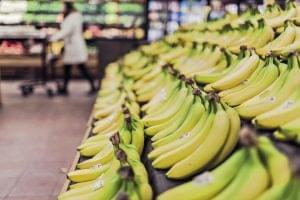Central and Eastern Europe’s retail trade is making progress
According to a comprehensive, 32-country European retail trade survey by GfK, in 2016 the consumers of the EU-28 countries had EUR 16,153 to spend – nominally 0.7 percent more than in 2015. The growth rate was the biggest in Central and Eastern Europe. As for Hungary, the per capita purchasing power grew from EUR 5,239 in 2015 to EUR 5,549 in 2016.
For 2017 GfK forecast a stable 1.4 percent growth in the retail sales of the 28 European Union member states. This year sales are developing most dynamically in Romania (+8.9 percent) and Hungary (+5.7 percent). However, the growth in consumers’ purchasing power only partially supports retail trade: in 2016 the long-term negative trend as regards retail’s share in consumption-type expenditure continued. In 2016 this share was 31.3 percent in the EU-28.

In 2016 shops’ sales area got 0.7 percent bigger in the EU-28. It must be noted that the population growth was exactly this big in this period; after a sales area increase of 0.4 percent, the per capita trading area was 1.17m². Just like in former years, a sales area unit was the most productive in Luxembourg, Switzerland, Norway and Sweden.
GfK’s retail expert Antje Hille told: Europe’s economy was solid and it performed well in 2016. The consumption of individuals has become an important engine of economic growth all over Europe, and retail has been profiting from this – even if the growth rates of individual countries are rather different. //
Related news
Private labels make plant-based alternatives cheaper
🎧 Hallgasd a cikket: Lejátszás Szünet Folytatás Leállítás Nyelv: Auto…
Read more >KPMG CEO Outlook 2025: replanned trust
🎧 Hallgasd a cikket: Lejátszás Szünet Folytatás Leállítás Nyelv: Auto…
Read more >Generations X and Y would be happy to cook more
🎧 Hallgasd a cikket: Lejátszás Szünet Folytatás Leállítás Nyelv: Auto…
Read more >Related news
How do young adults celebrate?
🎧 Hallgasd a cikket: Lejátszás Szünet Folytatás Leállítás Nyelv: Auto…
Read more >Vajda-Papír celebrates Ooops!’s 15th anniversary with a hybrid AI campaign
🎧 Hallgasd a cikket: Lejátszás Szünet Folytatás Leállítás Nyelv: Auto…
Read more >Pre-holiday shopping at up to half price
🎧 Hallgasd a cikket: Lejátszás Szünet Folytatás Leállítás Nyelv: Auto…
Read more >






